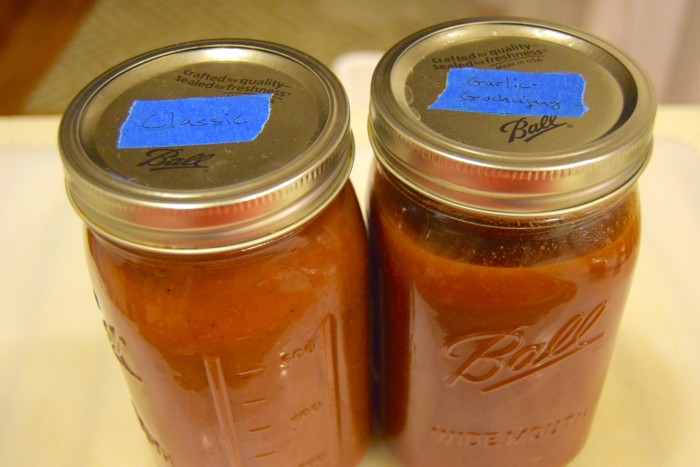Why You Should Make Your Own Steak Sauce (And How To Do It)
When I think of steak sauce, I usually think of backyard barbecues with well-done chunks of meat slathered in A.1. to make up for dryness and lack of flavor. I mean, don't get me wrong, I like the flavor of steak sauce, but it also has a connotation in my mind as "what you eat on mediocre steak." It doesn't have to be like that, though. You can make your own version of that bottled stuff that is way better, and not crafted to mask mediocrity.
I recently had a chat about steak condiments with executive chef Admir Alibasic of Manhattan meat haven Ben & Jack's Steakhouse. He had a vastly different opinion on the matter and successfully convinced me that my prejudices were tainted by dry-meat experiences. Alibasic developed the (Not Just) Steak Sauce on the tables at Ben & Jack's, a condiment coming soon to a grocery store near you. With a background in food science, he was able to create a product with a low enough natural pH to be shelf-stable without having to use additional preservatives that can contribute off-flavors.
But the best part about his sauce? It's good on more than steak. Here are some other dishes he's put the sauce on:
Now, if you're thinking about some of the more standard steak sauce options you'd find at the grocery store, not everything on that list will make sense to you, especially the pasta. But you can't think of that sauce (you know, the one I identified by name at the beginning). This sauce is different. It's got prospects, man. It's citrusy and bright with just a little heat, and pronounced sharpness from Worcestershire sauce.
So after all that, I decided to try making some of my own and ended up with two flavors: classic black pepper and garlic-gochujang.
Chef Admir gave me some great tips for making steak sauce at home, which I'll summarize for you.
Create your own base.
Ketchup can be used as a base, like in barbecue sauce, but only if you're in a rush or a pinch. Using real tomato sauce, sugar, vinegar and spices will give your sauce way more punch, not to mention allow you to avoid ingesting some less desirable ingredients, like high-fructose corn syrup.
Treat the ingredients properly.
For example, if you want to use horseradish, you have to cook it down separately first before adding to the sauce, otherwise you'll get something that's really bitter, without the pleasant zing you expect from horseradish.
Cook in stages.
Or, as Alibasic put it, "Combine the ingredients in a way that makes sense." Mix your wet and dry ingredients separately before combining, then add in the viscous ingredients like tomato puree and molasses. Doing this helps the sauce become a homogenous mixture at the end as opposed to some swirly, chunky mish-mash of things.
The flavor lies in the combination of ingredients.
The beauty of a good sauce is that the end product is greater than the sum of its parts. Sure, I'm going to make some focused sauces that accentuate particular ingredients, but to be successful those sauces have to take into account the base on which those main ingredients will stand; if the base is flat or unbalanced, the sauce is not going to be very good.
Don't get disappointed with the need for multiple iterations and refinements.
There's a lot of stuff that goes into a good sauce, so don't be surprised if the first time you try to create your own recipe it doesn't quite work out perfectly.
Classic Steak Sauce
Solid/First Stage
Wet/Second Stage
Dry/Second Stage
Viscous/Third Stage
Garlic-Gochujang Sauce
Solid/First Stage
Wet/Second Stage
Dry/Second Stage
Viscous/Third Stage
Directions (Both Sauces)



